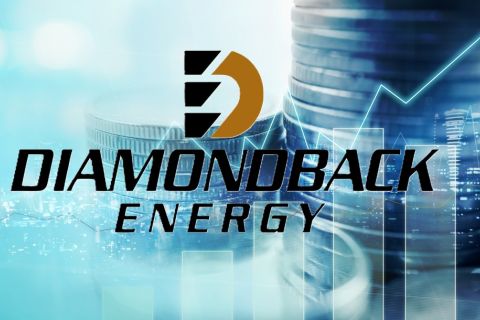The rapid growth of unconventional resources in North America, especially shale gas and liquids, has generated both enormous enthusiasm and deep skepticism. Some have proclaimed that shale represents extremely low-risk manufacturing-style opportunities, while others question whether it has or ever will truly yield the anticipated returns. The collapse in regional gas prices has driven home the marginal nature of these assets with their substantial exposure to commodity price risk. This in turn is forcing the debate around how to best allocate sparse capital between conventional exploration programs and unconventional resource projects, causing the industry to rethink how it characterizes unconventionals.
With more than a century of experience, our industry has widely adopted frameworks and tools for understanding and quantifying risk and rewards for conventional exploration opportunities. There are well defined stages, each with its own associated risks and activities. However, the industry has yet to clearly characterize unconventionals, and it lacks commonplace techniques for evaluating unconventional investment opportunities against conventional options within the overall upstream portfolio concept.
Comparisons using life cycle frameworks
Conventional exploration prospects progress through distinct life cycle stages: exploration, appraisal, development, and production, with clear transitions for each stage (exploration well discovery, final investment decision [FID], first production, and abandonment). Following the appraisal process and having sanctioned the project for development, the industry typically no longer applies subsurface risk to the entire project. Uncertainties and risks remain and are worth modeling as sensitivities, but these are risks to an asset’s valuation, not its technical and commercial viability.
There are two major differences in applying a similar life cycle approach to unconventionals. First, the transition between stages for unconventionals is far less discrete than with conventional prospects. Second, derisking is a slower and more gradual process. For unconventionals, Wood Mackenzie has defined concept, pilot, ramp-up, and exploitation life cycle stages. During concept, the operator tries to identify prospective unconventional resource targets that do not have any production history. To fully derisk the concept, the operator must run a pilot drilling program to work out the engineering and cost-benefit tradeoffs that establish repeatable, economically profitable results. During these early two stages, it is unclear whether a commercial-scale development program will be viable. Thus, just as a conventional field’s development cash flows are risked, the same process should be undertaken on the potential shale development cash flows.

Investment profiles compare hypothetical conventional and unconventional programs. (Images courtesy of Wood Mackenzie Consulting)
Operators have not traditionally talked about making FID on a shale asset; however, there often is a ramp-up period after the pilot stage in which financing is secured, rig fleets and completion crews are contracted, leases are drilled to hold, midstream is built out, etc. The project then moves into the exploitation phase, when development drilling must continue to maintain production (due to steep decline curves). During these later stages, the “percent developable” acreage and well performance deviations represent the major remaining subsurface risk that unconventionals face that conventional fields do not. Percent developable is a direct determinant of the number of well locations (hence remaining value) of the undeveloped portion of the acreage. These later-stage risks can be quite substantial. For example, a leading US operator of shale plays has applied factors of 30% to 75% developable to its established positions.
The value and returns from conventional and unconventional assets share the same primary drivers – price, production volumes, capital costs, and fiscal terms – and they are equally impactful across the life cycle. The key driver of value that evolves across the life cycle of a project or prospect – ultimately the variable with the largest impact on valuation – is the overall commercial “chance of success” (CoS), quantified by combining technical and commercial risks.
Shale CoS is less than one
The evidence is mounting that shales are more risky and less homogenous than originally conceived. Out of more than 30 shale gas plays in the US, only 10 have emerged from pilots into full development mode. While the jury is out on several plays still being tested, another 10 have arguably been proven noncommercial or face numerous subsurface and above-ground challenges. Stipulating that there is a “failed play” for every proven shale suggests that the CoS for an entire play could be around 50%.
Even when shale plays undergo serious pilot efforts, they do not emerge in their entirety as a commercial play. The Niobrara is a prime example of a play in which heterogeneity has meant that only a subset of the pilots conducted in the play are leading to commercial development. The pilot stage also is one of delineation of core areas and sweet spots, and even in largely homogenous plays, the percentage of acreage that is commercially viable is far less than 100%. For example, success in the Eagle Ford is concentrated along the narrow gas-liquids transition window that runs down the middle of the play.

Value sensitivities differ between conventional and unconventional development projects.
Portfolio allocation
Using the life cycle framework enables operators to acknowledge and account for the fact that most investment opportunity comparisons are fundamentally not like-for-like. The very real allocation decision facing many large E&P companies today is between their conventional exploration programs and their existing shale asset developments. To consider such a case, Wood Mackenzie conducted a hypothetical exercise for a company deciding between allocating US $1 billion per year over five years with the choice of either a high-impact exploration program in the Gulf of Mexico (GoM) or developing an existing, proven Eagle Ford shale position.
The two options offer very different value propositions: In terms of reserve additions, $5 billion spent on GoM exploration may discover around 1 Bboe from new fields (discovery costs in an achievable $5/boe range), while in the Eagle Ford this buys almost 600 wells, which if assuming an average estimated ultimate recovery (EUR) of 900,000 boe, yields only half the reserves at around 530 MMboe. Using default economic assumptions and analogs for the Eagle Ford and GoM, we modeled the production and value of both programs. The GoM program results in substantially higher net present value (NPV) at more than $5 billion (net of the exploration costs), while the Eagle Ford project yields only about $1.5 billion. Unconventionals such as the Eagle Ford do offer some advantages, including nearer term production, in this case reaching a peak production rate of 130,000 boe/d within five years. Longer development cycle times for deepwater projects mean the GoM pro- gram would not reach its peak production of 174,000 boe/d for 11 years. Earlier production provides revenue that can help fund capital requirements, meaning the maximum net cash impairment of the Eagle Ford project would only be $2.8 billion, while the deepwater program would require $8.5 billion.
Because they are so different, the investment profiles of conventional and unconventional assets can be highly complementary and can work in tandem at a corporate level. Early production from unconventionals can fill the void of long conventional cycle times. This, in turn, provides early positive cash flows, helping to offset the otherwise deep, standalone cash impairment of a conventional opportunity. Conventional and unconventional assets also can be complementary within a portfolio in that they offer different risk profiles (types of risk and timing), theoretically providing a potential source of diversification for the overall risk profile of the portfolio. Given their typically much larger acreage footprint, unconventional assets also can provide a great deal of resource upside potential with future technology improvements. The key is managing unconventional assets within the portfolio with full appreciation of their life cycle stage and risk characteristics.

Conventional and unconventional assets can be complementary to a company’s portfolio.
Project sensitivities
It also is critical to recognize how the marginal nature of shale projects will impact a portfolio’s exposure to commodity, volume, and cost risks. When comparing later life cycle stage assets, one must consider the usual key uncertainties: volumes, price, and cost. Here, the valuations of the unconventional assets are far more sensitive, mostly due to their significantly higher break-even prices. For example, a Bakken project may have a break-even price in the $50/bbl range vs. a large discovered GoM field with a break-even price around $15/bbl. In this instance, a 20% change in the volume of the GoM field may result in a 30% change in NPV, but a 20% change in well EUR in the Bakken will swing the NPV plus or minus 110%.
A change in price has an even larger impact. This level of volatility in commodities is commonplace, and volumes are highly uncertain. But while the conventional field economics can suffer a setback, the Bakken project is at risk of being uneconomic. For many shale gas producers, this phenomenon is all too real. In this light, unconventionals are riskier than conventional fields, especially during the development phases.
The value of unconventional projects also is far more sensitive to costs than conventional projects. In the case of opex, the impact on conventional projects is insignificant whereas for unconventional projects opex is still relevant. This may represent an underappreciated long-term risk for unconventionals as there is limited experience with and information on the long-term operating costs and maintenance requirements for the tens of thousands of shale wells being drilled, particularly for those producing liquids. On the plus side, technological advantages that reduce costs, even incrementally, have the potential to greatly enhance asset values.
Evolution of risk
With the benefit of experience, we now understand that unconventional resource plays and shales in particular are just as risky as conventional high-impact exploration. Additionally, the nature of this risk evolves in a less definitive manner over the asset life cycle, and the residual risks (percent developable) and uncertainties (marginal economics) are more severe for unconventional assets, even during the development stage.
However, there is a role for unconventionals in the corporate portfolio as long as companies employ frameworks and approaches for evaluating risk that enable them to compare unconventional and conventional opportunities on a near like-for-like basis. With so many variables and unknowns with unconventional asset modeling, it is critical to identify which ones deserve the most upfront scrutiny. This is largely determined by the asset’s current life cycle stage. With unconventionals, there is a temptation to focus on the more well understood engineering and operational assumptions; however, it appears more and more that strong technical and commercial evaluations of risks and uncertainties are far more important.
Recommended Reading
Hess Corp. Boosts Bakken Output, Drilling Ahead of Chevron Merger
2024-01-31 - Hess Corp. increased its drilling activity and output from the Bakken play of North Dakota during the fourth quarter, the E&P reported in its latest earnings.
Petrie Partners: A Small Wonder
2024-02-01 - Petrie Partners may not be the biggest or flashiest investment bank on the block, but after over two decades, its executives have been around the block more than most.
CEO: Coterra ‘Deeply Curious’ on M&A Amid E&P Consolidation Wave
2024-02-26 - Coterra Energy has yet to get in on the large-scale M&A wave sweeping across the Lower 48—but CEO Tom Jorden said Coterra is keeping an eye on acquisition opportunities.
Endeavor Integration Brings Capital Efficiency, Durability to Diamondback
2024-02-22 - The combined Diamondback-Endeavor deal is expected to realize $3 billion in synergies and have 12 years of sub-$40/bbl breakeven inventory.
Exxon, Chevron Tapping Permian for Output Growth in ‘24
2024-02-02 - Exxon Mobil and Chevron plan to tap West Texas and New Mexico for oil and gas production growth in 2024, the U.S. majors reported in their latest earnings.





